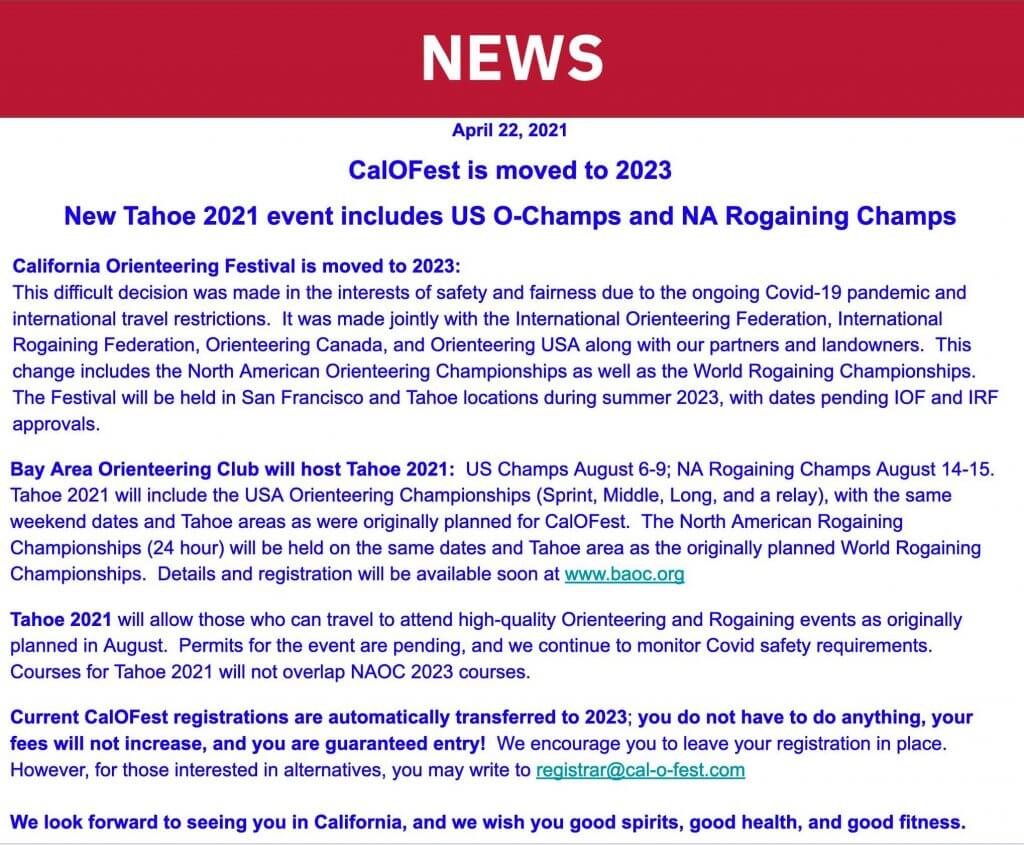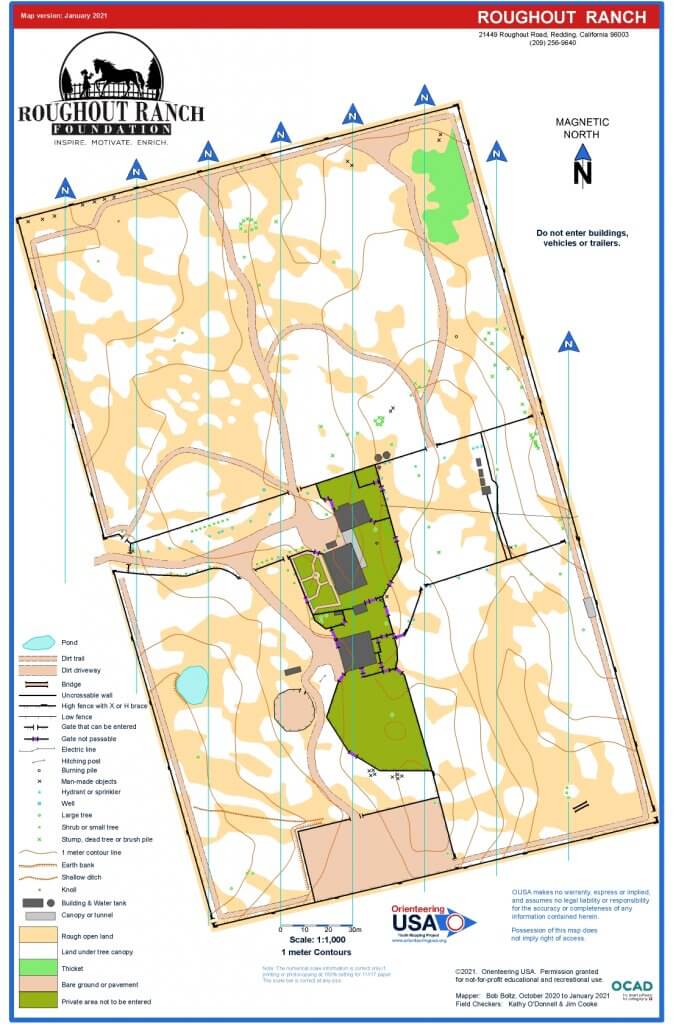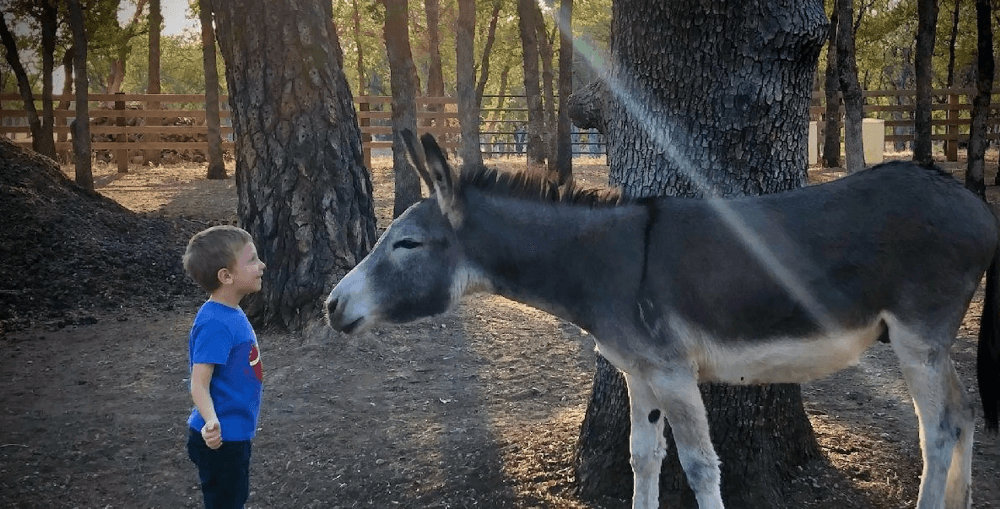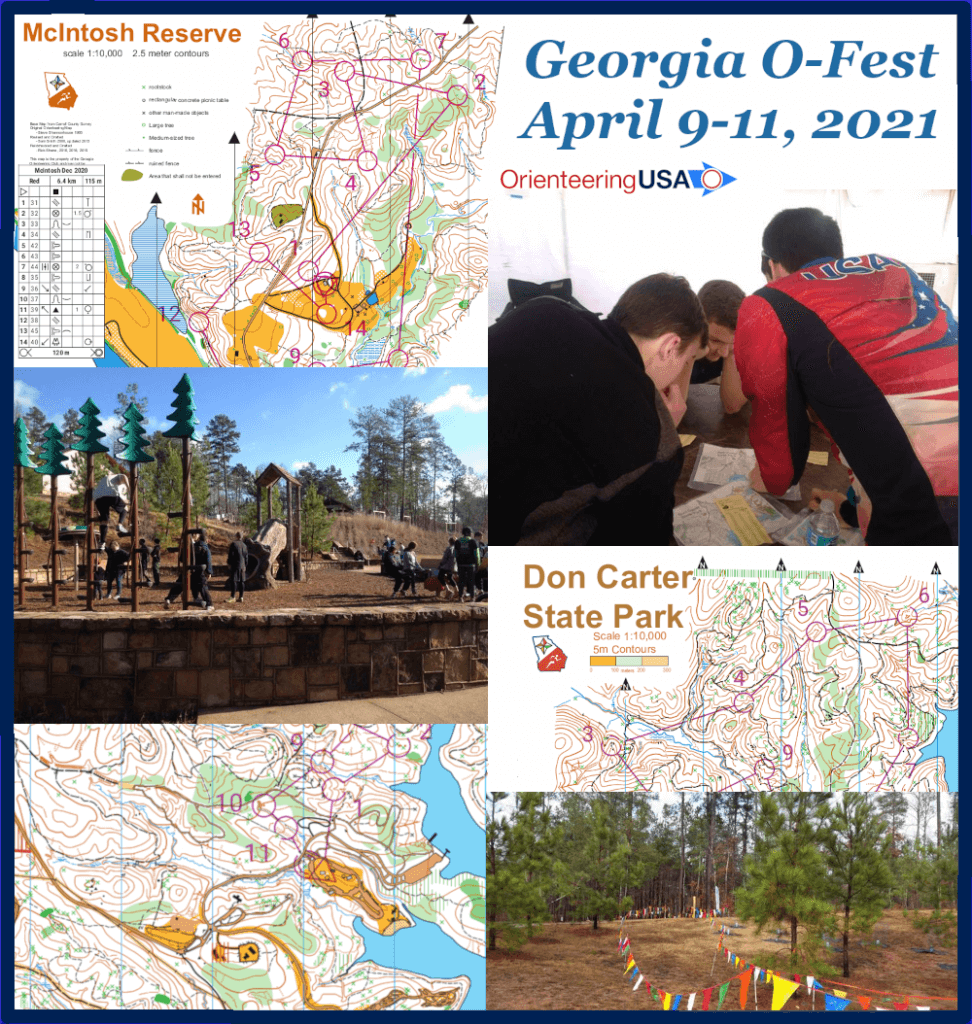California O-Fest moved to 2023
California Orienteering Festival 2021 has been moved to 2023.
In its place a new Tahoe 2021 event that encompasses the same range of dates is planned. This new event will include the 2021 US Orienteering Champs and NA Rogaining Championships {pending sanctioning}.Difficult decision to be sure, but this allows the CalOFest to still be held, albeit a few years down the line, and yet still allows a quality series of summer events this year for those able to travel to California.




